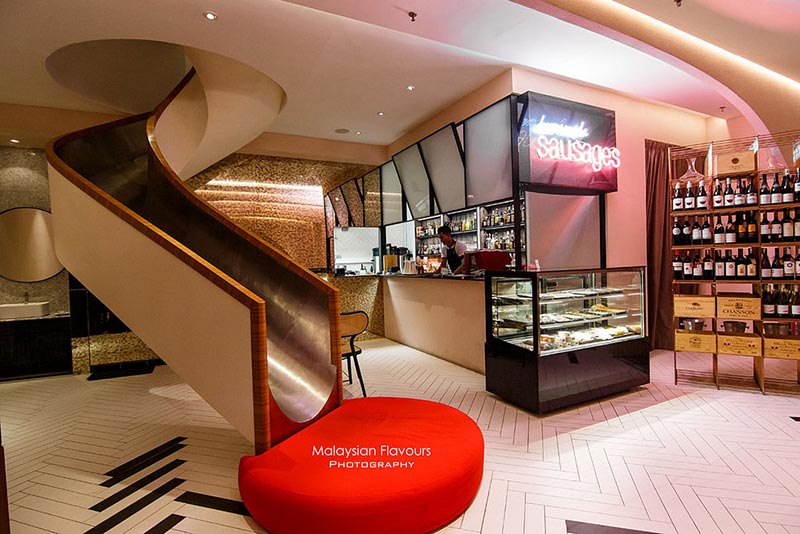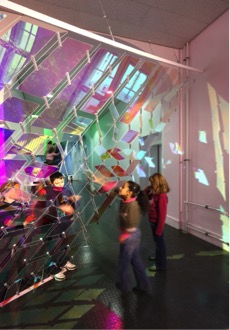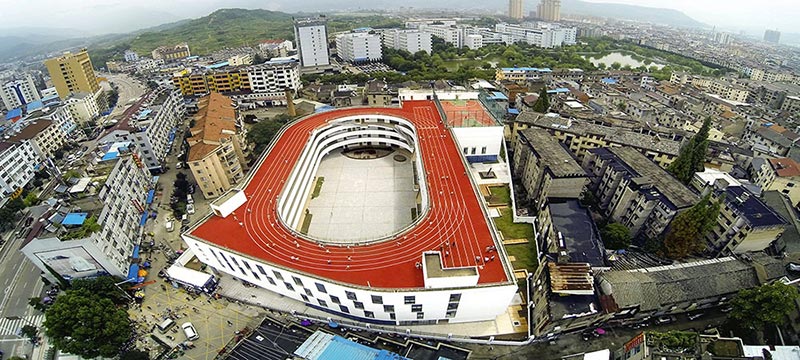Let’s get straight to it. I dislike classrooms. I dislike learning in them, I dislike teaching in them. What I do like is teaching in among others—a coffee shop with interactive music, a shopping mall with a slide, an outdoor garden with a playground, theme parks, and an escape room. Now, before you dismiss this list as a series of spaces which are impossible to learn in, hear me out.
In recent times, the narrative of play has seen a substantial increase in its application across multidisciplinary platforms. It is currently used as a selling point in advertising, a learning tool in architecture (Pearson, 2017), a tester of urban environments, as a marketing gimmick for movies, and it even appears in hotels (with a slide!) (hint: MOV Hotel Kuala Lumpur)

The active pursuit of playing has resulted in a multibillion dollar industry, nonetheless with vast undiscovered potential across disciplines. With the steady rise of play-based learning and its application across learning platforms, there is increasing proof that the gamification of learning has brought about positive changes in the education industry. There are numerous examples of learning through playing, for instance in the Erika Mann School & Carl Bolle Elementary school designed by Die Baupiloten Architects.

In the Erika Mann School, the architects engaged with the users who were children, to design a space to learn through exploratory means. Interestingly enough, upon getting feedback from the children, the idea of the space was conceptualized on a fictional story of the Silver Dragon World which became a series of design interventions on each floor. On the other hand, in the Carl-Bolle Elementary School, the often dreary subject of science has taken a whole new twist through the story of a Spy with the Shimmering Cloak! This is a space centered on discovering scientific phenomena through the act of playing spies and being curious! Curiosity never killed the cat after all!

In yet another example, in 2014, the Tiantai No. 2 Primary School in China was constructed by LYCS Architects (ArchDaily, 2014). According to the architects, they wanted to build an architectural environment in which the primary school students would be able to cultivate knowledge, culture, physical fitness, art, and ethics. That resulted in a playground on the roof with a vista and physical sessions in the morning under a wide expanse of space allowing the children to blur the boundaries between learning and playing!
With such bold design interventions in learning spaces, one may begin to question the definition of learning. What is the definition of learning? According to the Oxford Dictionary 2019, learning is defined as: The acquisition of knowledge or skills through study, experience, or being taught.


As you would be able to discern from the definition of learning, nowhere does it state that learning has to be a primarily taught process as we are usually accustomed to, but could also be learned from the layers of accumulative experience and self-study. This opens up a world of possibilities in which learning is not merely taught in places such as schools, but is actually considered a phenomenological experience in which we continuously acquire knowledge in any discipline through a host of avenues and methods. Now juxtapose this with an actual event in a daily classroom. Don’t we all seem far removed?
There are some real benefits to the act of playing! Playing, in a study by LEGO, (LEGOFoundation, 2017) is one of the most natural and primal instincts in the development of our lives and also that of animals. According to Pellegrini, “from vocal play in human infants to play observed in other animal species such as rats, non-human primates, and dolphins, play seems to be a natural inclination across the animal kingdom and helps individuals within a species to learn, grow, and thrive (Pellegrini, Dupuis, & Smith, 2007).
Ironically, play is the first thing we tend to discard as adults when we grow into our mature years. It is of absolute importance from the arguments presented above that we consider the act of playing a natural dispersion of learning. Learning is accrued through playing, and playing is accumulated through learning.
Before I leave you to play around with the ideas of playing swinging in your mind, I would like you to consider a last point. In the 1880s to 1940s, according to Harris-Lacewell, American barbershops were a place of vigorous debate and exchange of ideas on the political scene. These debates influenced African-American political ideologies and lead to a huge influence on the political scene. Doesn’t a barbershop then qualify as a place of learning? Now, wouldn’t that be something?
REFERENCES
- Pearson, L.C., (2017) From SuperStudio to Super Mario, Retrieved from: https://www.e-flux.com/architecture/becoming-digital/248078/from-superstudio-to-super-mario/
- Oxford Dictionary (2019) Learning | Definition of learning in English, Retrieved from: https://en.oxforddictionaries.com/definition/learning
- ArchDaily (2014) No.2 Tiantai Primary School, Retrieved from: https://www.archdaily.com/551598/tiantai-no-2-primary-school-lycs-architecture
- LegoFoundation (2017) Learning Through Play, Retrieved from: https://www.legofoundation.com/media/1063/learning-through-play_web.pdf
- Harris-Lacewell (2006) Barbershop, Bibles and BET, Retrieved from: https://press.princeton.edu/titles/7761.html

